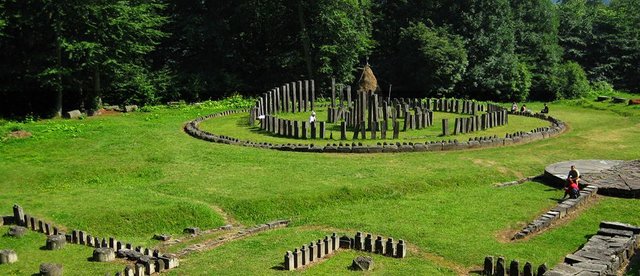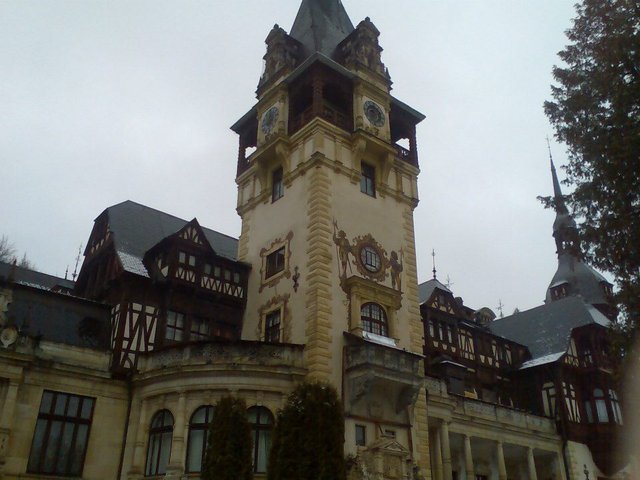Romania - introduction [part I]
Hello Steemians,
I wanted to start writing about my country some weeks ago, but I postponed it for several times. Hence, I guess it’s time to get things moving :)
Many of you heard about Transylvania and Dracula, but Romania is more than that.
Corvin Castle, Hunedoara, Romania
© Alina Barbu
History and language
Let’s start with a bit of history. Romania has a long and rich history.
At the beginning of the new age, the territories between the Danube and Dniester rivers were inhabited by Thracian peoples, among which the Dacians and Getae. There were several disputes on whether the two peoples were in fact one and the same, however some Greek historians are mentioning both peoples as being located on these territories. Herodotus noted that there was a religious difference between the two peoples, while Strabo mentioned that they were spoke the same language. The capital of the Dacian people was at Sarmizegetuza.
Sarmisegetuza Regia today

Photo credit: www.turistderomania.ro
In the second century A.D., The Dacian kingdom, under the lead of Decebalus, was conquered by the Roman emperor Trajan and it became a Province of the Roman Empire called ‘Dacia Felix’. Becoming part of the Roman Empire influenced a lot the local traditions, language and development of the territory. The Romans introduced Latin as official language.
During Middle Age, Romanian lived in three principalities: Wallachia, Moldavia and Transylvania. Each of them had its own prince. By 11th century, Transylvania became a part of the Kingdom of Hungary, while Wallachia and Moldavia were fighting with the Ottoman Empire for maintaining their independence. By 1541, all three principalities got under the Ottoman suzerainty, having partial or full internal autonomy. It was a period of great battles and wars between Romanians and Ottomans.
Medieval city - Sighisoara, Romania
© Alina Barbu
In 1600, for the first time, the three principalities were ruled by the same Wallachian prince, Mihai Viteazul, however, a year later, he was killed and the union did not last.
For the next couple of centuries, Romanians lived divided and under foreign suzerainty. During this time, nationalistic views came to life and, in 1859, both Wallachia and Moldavia electors voted for the same prince, Alexandru Ioan Cuza, but the union was still under the suzerainty of Ottoman Empire. The reign of the new prince was short, in 1866, Cuza was exiled and a foreigner prince, Carol de Hohenzollern-Sigmaringen, came to the throne. He will remain in history as Carol I of Romania.
Summer Royal Palace

© Alina Barbu - photo taken with my iPhone
At the beginning of World War I, Transylvania was still an autonomous province of Austro-Hungarian empire. In 1916, Romania decided to enter in war and after the war Bukovina, Banat, Transylvania and Bessarabia were recognized as Romanian territories.
However, the Romanian borders as we know them today, were outlined after the World War II when Bessarabia and parts of Bukovina were annexed by the Soviet Union.
After World War II, Romania entered the communist era. The early phase of the communist regime was pretty strict as Romania remained under the direct military occupation and economic control of the USSR until late ‘50s. In 1965 Nicolae Ceausescu became the president of Romania who managed to conduct the foreign policy more independently from the Soviet Union, but also imposed a huge cult of personality that led to a violent revolution in December 1989 putting an end to the Romanian Communist era.
Nowadays, Romania is a democratic republic with a bicameral Parliament, part of NATO and EU.
The Romanian language has a huge Latin influence, being one of the Romance languages, almost 60% of the lexis originating from Latin. It is the official language spoken in Romania and the Republic of Moldova.
And a video with some interesting facts about Romania

Wow, a huge insight into Romanias History. Makes one realize how little you know about other countries history. BUT you know we all came for the tale of Vlad the Impaler :3
Indeed, some time we do not know many things about the history of other countries. I willright about Vlad in another post - emblematic figure :D
This was really interesting, thanks for putting it together!
Thank you for your nice comment! I'm glad you liked it :) have a great day!
Beautiful pictures! Great buildings!
Thank you, @bart2305!
Thank you for this post. I loved to read it and see the photo's.
Thank you for your nice comment, @patrickbijvoet! I'm glad you liked it. Have a nice week-end :)
Great picture, happy to look it
Thank you, @jamhuery!
you are welcome @alinabarbu
Excellent work congratulations dear friend @alinabarbu, thank you very much for these beautiful photos
Thank you for your nice comment, @jlufer! I'm glad you liked it:) have a great day!
oh great !!! Very stunning place, it's a dream place i would like to visit one day.
Thank you for your nice comment! You should visit those places someday. I will post more about my trips in these locations :)
I'm Romanian as well and first time when I search "romania" as a tag I see this kind of post. I'm proud that there is forming a community here and that people love to see this kind of pictures. Cheers!
I'm really happy that we have some people on the platform. Also the community is really interested about our country which is a great thing. Have a nice evening! Cheers :)
Me too! I am new in this community... Nice to see people from my country here! I will follow you! :) Both of you! I just upvoted your comments theospay and alinabarbu... :) Alina, very nice post about Romania!
Great Post. Love learning about history of different countries. Would love to visit one day and see these beautiful historical places when I'm able to.
Thank you for your nice words! I'm glad you liked it. I will post more about these places in my next articles